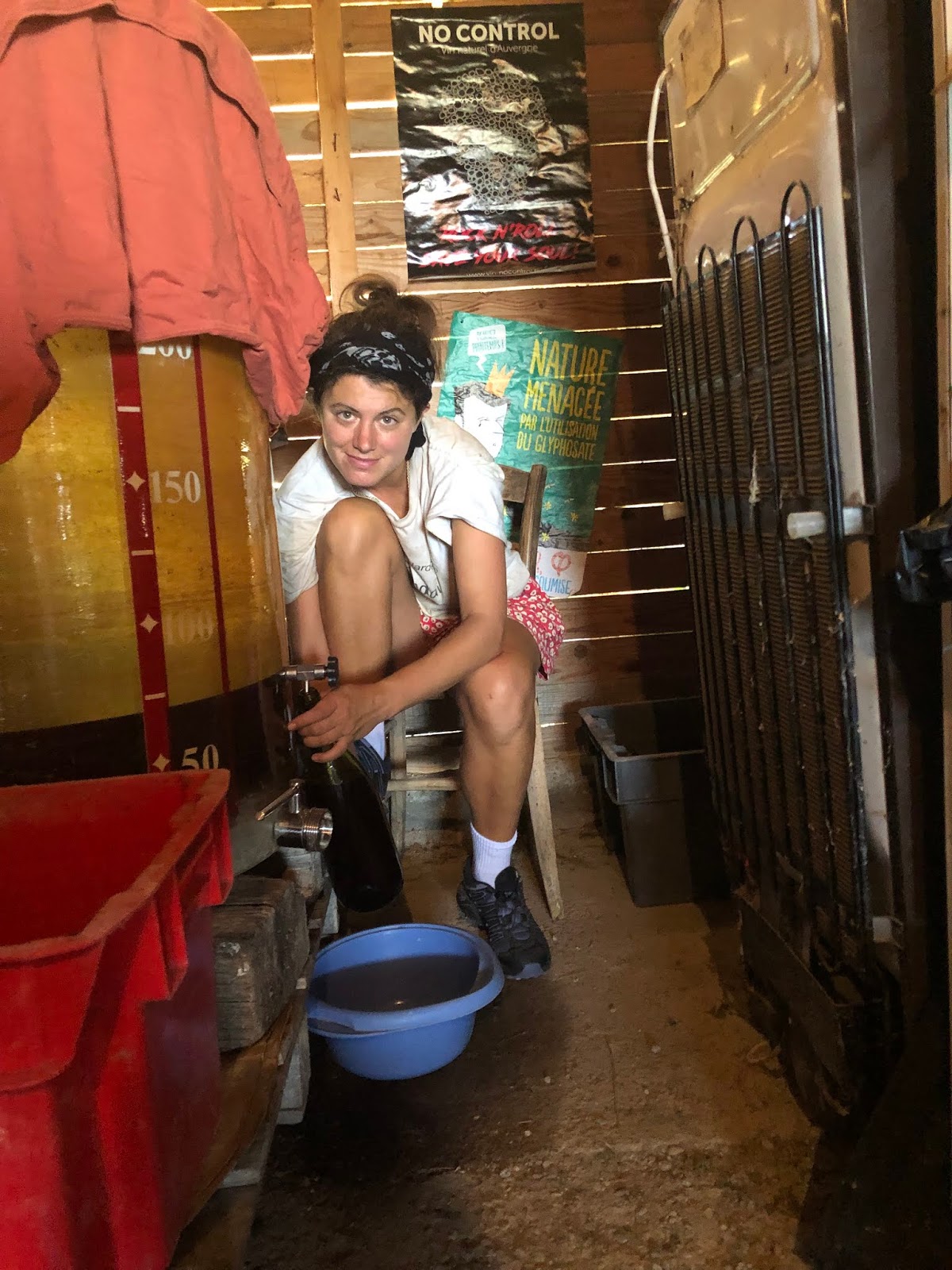
I know that wine is about transformation, but no one warned me about the transformative power of packaging, and how in seconds it could change what had been a previous leaking nuisance into a thing. Perhaps this is one of those ground-up things they teach you at wine school along with paperwork and how not to cross le fisc, but until we bottled our first wine at seven PM-ish on the 31st May 2019, it was totally new to me.
In order to keep a story that concerns a ruptured valve, a death, no running water, two heatwaves, 40 metres of garden hose and an airbed pump as brief as possible, I will – as I explain the phenomena – try to be succinct. Sitting on a chair filling the first 75cl of five hundred litres slowly from the deguster in 42 degree heat, capping it, and setting it on one of those black plastic bottle-holder things to rest, was magical. The transformation from ‘always something the matter’ to ‘wine’, complete.
Now it had a label it went from anonymous wine to recognisable. It was Instagram-able.
It might sound obvious, but as soon as the stuff went into bottle, it finally looked like wine, and we started treating it as such. It was suddenly portable, chill-able, share-able. Just like real wine it was suddenly wish-swish, sniff-sniff and trill-able. It had a nose. We spent time considering qualities such as colour, acidity, wood-memory, length (short). We wondered if people would recognise it as Grenache through the carbo.
Now in bottle, it was box-able, stack-able, shelf-able. From a shed full of nothing to one full one full of stock. More wine than we’ve ever had, and all of it for ‘free!’ We had so much we could drink it whenever we wanted, and we were liberated from having to consider those pros and cons one does before opening something special. Drinking was now research and our research was even drinkable. Enjoyable! Although I’ll never know if this is thanks to the magic of bottling or beginner’s luck. We toasted our new lives, marvelled how we made this and felt very rich.
Then we labelled some and suddenly they were sellable.
The idea was to sell enough to cover our costs, and these, as the wisdom goes, just to fools family and friends. It was our house wine, not something that we ever considered people wanted to buy. So, we packed it off, took the money and ran. Except we got caught.
Now it had a label it went from anonymous wine to recognisable. It was Instagram-able. Its novelty made it desirable. Things went from there and from there to my head, and in a world obsessed with sharing images things go extremely fast.
Suddenly, work you can’t put a value on had a price. The liquid memory of everything it took to make, was for sale. Suddenly, we had to count: The pros and cons of opening one of our bottles, or perhaps something less special. How many have we sold? How many are left? Our research stopped, our toasts became less frequent: both had turned kinda expensive from free. And then we realised we’d never taken stock (there had been no need when it was just for us), and suddenly there could never be enough, and we marvelled at the time we felt so rich and that we had so much.

